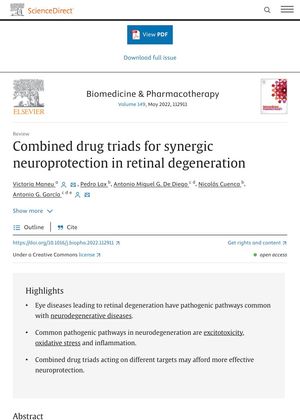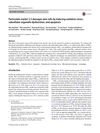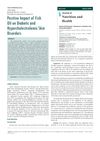Combined Drug Triads for Synergistic Neuroprotection in Retinal Degeneration
April 2022
in “
Biomedicine & pharmacotherapy
”

TLDR Using three different drugs together may better treat eye diseases like glaucoma and macular degeneration.
The review discusses the potential of using combined drug triads to treat retinal degeneration conditions like glaucoma, age-related macular degeneration (AMD), diabetic retinopathy (DR), and retinitis pigmentosa (RP). These conditions share common signaling pathways leading to cell death, including calcium overload, oxidative stress, and neuroinflammation. The authors propose using three drugs (triads) that act specifically on each of these three pathogenic targets. The proposed triads are Memantine, Pioglitazone, and Mynocicline (Triad 1); Nivaldipine, Edaravone, and Naloxone (Triad 2); and Ceftriaxone, MitoQ, and Valproic acid (Triad 3). The authors suggest that this multi-target therapy approach could be more effective than single-drug treatments and could be safer and more efficient when used at lower than standard doses. However, this concept needs to be tested in animal models and clinical trials to evaluate its safety, efficacy, and therapeutic advantages in humans.




